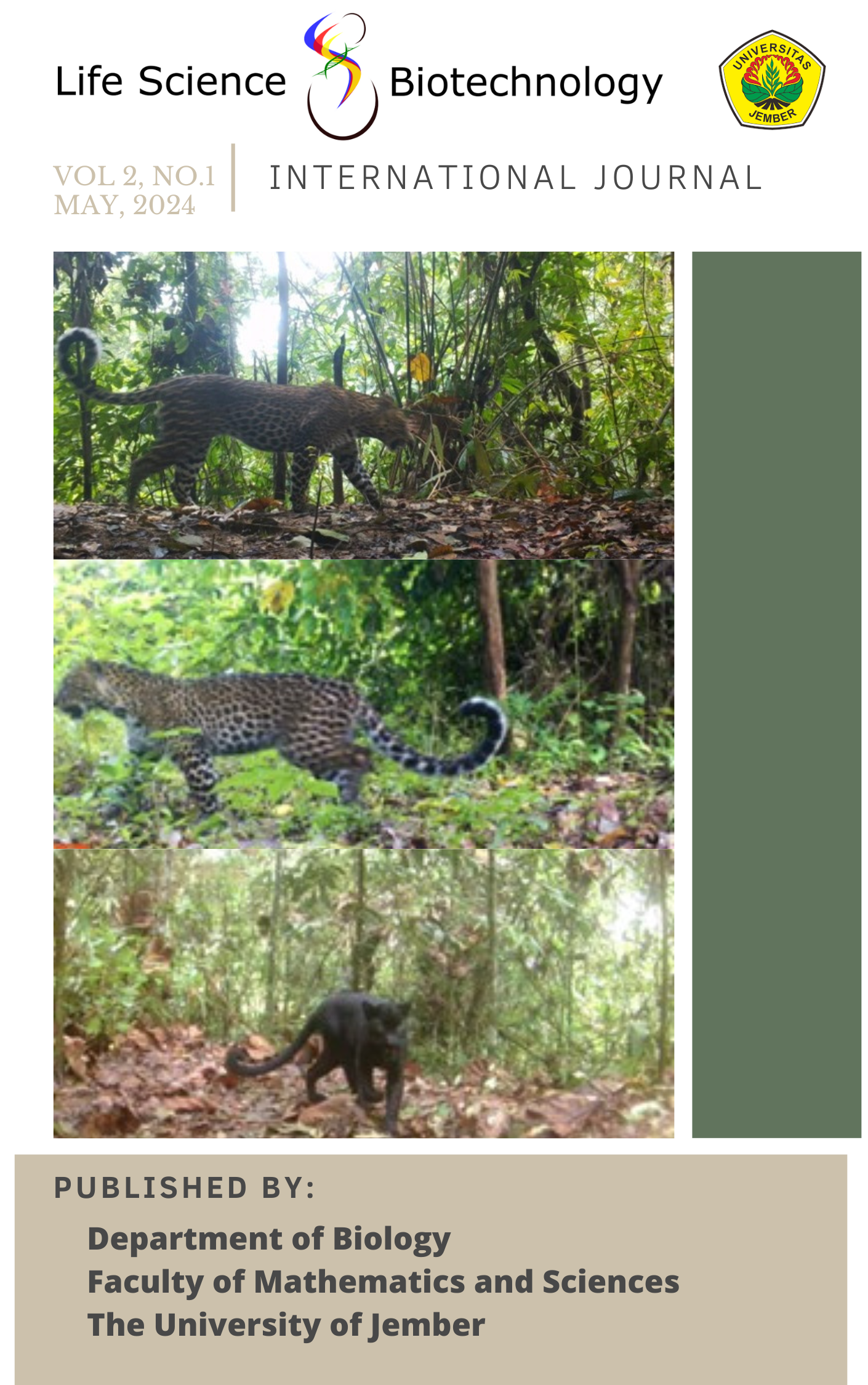Prediction Prediction of the Insecticidal Potency of Biduri Plants (Calotropis gigantea) using the PASS online web resource
Abstract
Calotropis gigantea, a wild plant thriving in arid environments, has been traditionally used for medicinal purposes by communities near Baluran National Park (BNP). The latex of C. gigantea is used as a crab poison due to its ability to cause fatal damage and separation of body parts, possibly related to chitin disruption in insects. This study explores the potential insecticidal properties of secondary metabolites in C. gigantea using Prediction of Activity Spectra for Substance (PASS) Online. Out of 68 identified secondary metabolites, six show significant insecticidal potential, namely Profenophos, Ethion, Alpha-Citral, 1-Phenylethyl acetate, (E)-dec-3-en-2-one, and Benzaldehyde. Notably, Profenophos, Ethion, Alpha-Citral, and Benzaldehyde exhibit toxic properties effective against insects, with enzyme inhibitory activity affecting nerve signaling and immune systems, suggesting potential for bio-insecticide development.





